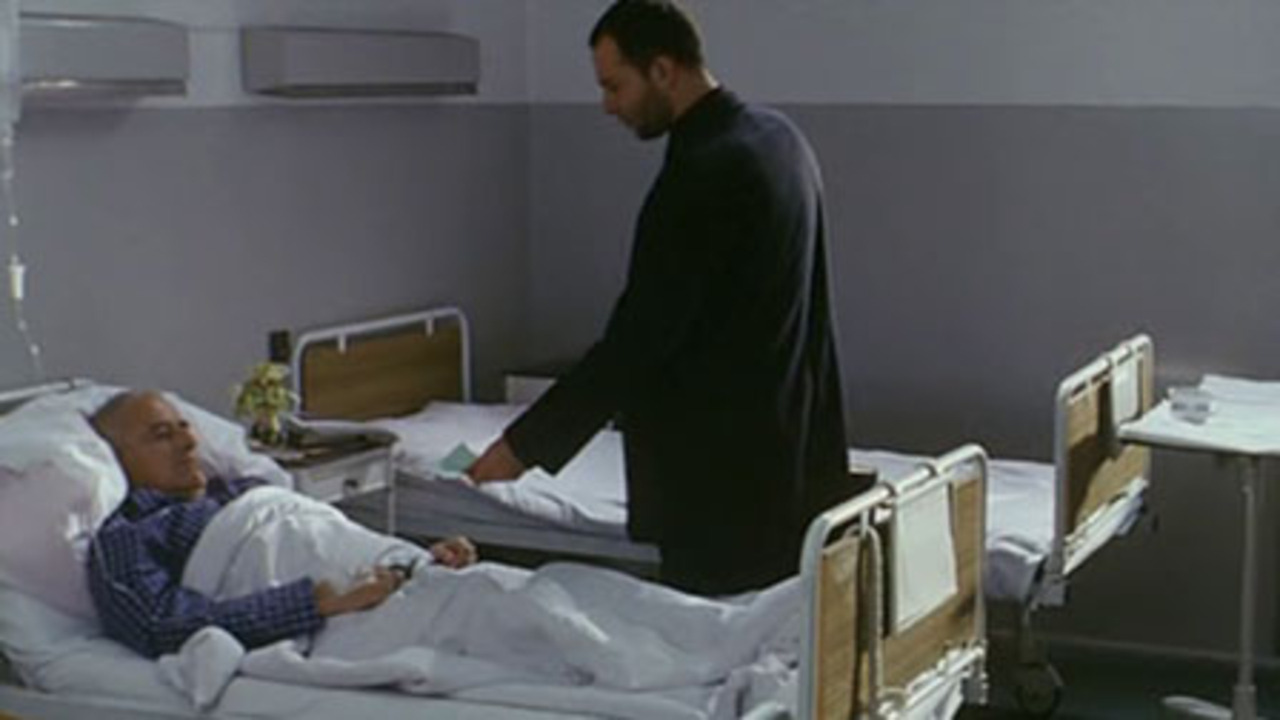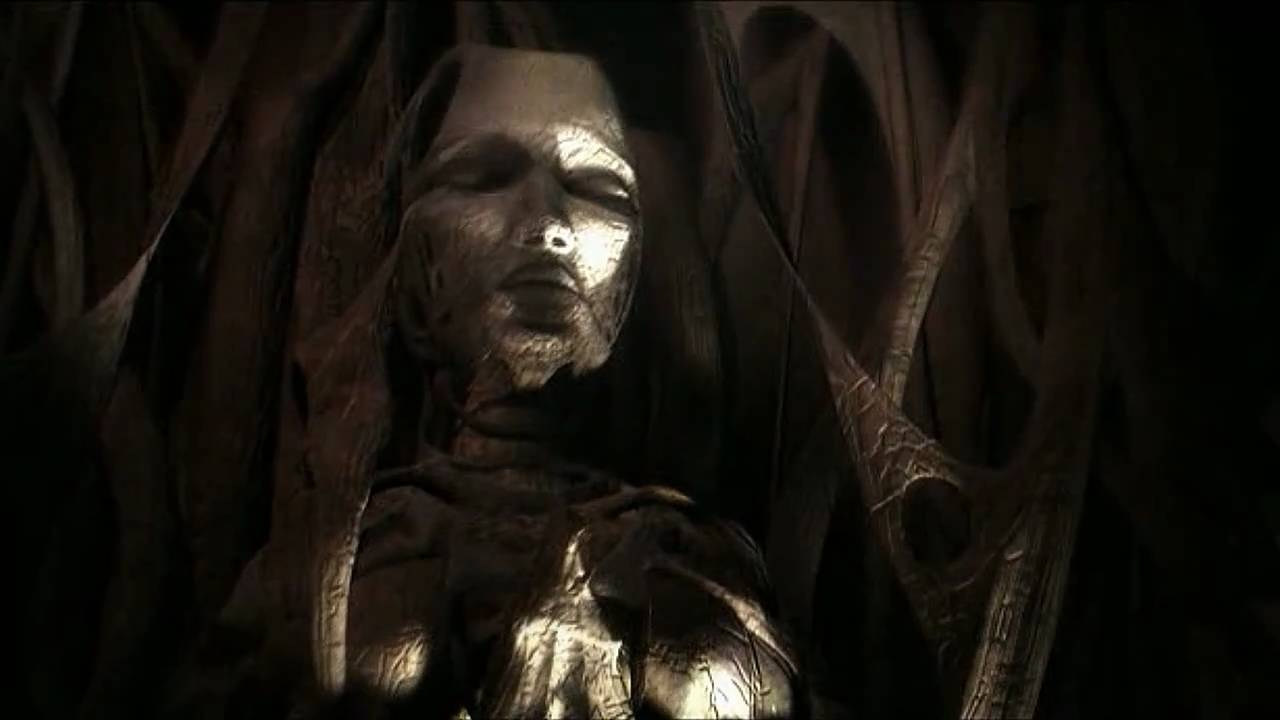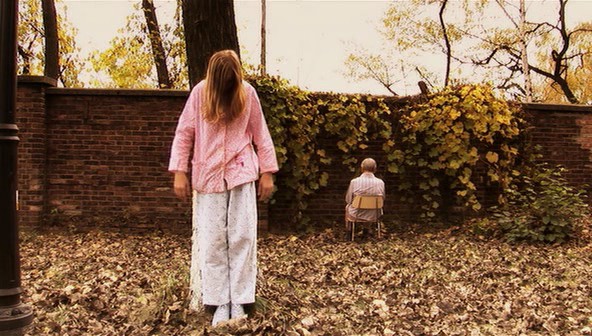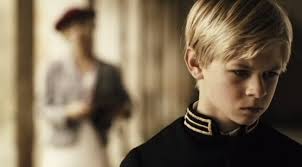27. The Double Life of Veronique (1991). Dir. by Krzysztof Kieslowski

Not strictly a Polish film, being a French co-production, but, arguably, Kieslowski’s most complete achievement as a feature. Although he is far more famous for the Three Colors trilogy and the Dekalog, this one stands out even wedged between those masterpieces as a film where Kieslowski successfully explored multiple themes is a breathtakingly artistic way. This isn’t art-house. This is Art.
The parable-like plot is actually very coherently presented, the story playing like two distinct yet related acts of a drama. It focuses entirely on two heroines-the Polish Weronika, and her French doppelganger Veronique. Though separated by the distance between Krakow and Paris, they are remarkably alike.
Both are hyper-sensual and attuned to the world, both are inclined towards music and complicated relationships. Of this world, and at the same time-otherworldly, a rarest and possibly the most fascinating kind of woman. Kieslowski presents almost a feasible universal connection, a sort of cosmic breath that connects the two girls.
Both are played by the unique Irene Jacob, for whom it was a first major success in her not too extensive but very rewarding career. She lucks out here, receiving superb direction from Kieslowski, and is fantastically presented by the great Polish and now Western cinematographer Slawomir Idziak, to the haunting melodies composed by the equally masterful Zbigniew Preisner.
Using filters, Kieslowski present the whole picture as if through the slightly golden glass, almost imperceptible yet very much there. The camera moves like the eyes of an angel, and many scenes are achingly beautiful and memorable (especially the puppet act). Kieslowski caught some flak in Poland for being “apolitical” and “self-serving”, but the critics missed the bigger picture and completely misjudged his intention.
As the Iron Wall came down, a new spirit emerged, and Kieslowski captured it.
Note: the translation of the title is somewhat misleading. More correct would be “Doubled Life”, that way it wouldn’t sound like some sort of pulp or illicit affair.
28. Fotoamator (1998). Dir. by Dariusz Jablonski

This 52min. documentary gem deserves to be mentioned in the same breath as Alain Resnais’ “Night and Fog” and Claude Lanzmann’s “Shoah” as far as harrowing and cathartic Holocaust documentaries are concerned. What triggered its making was the release of a series of 400 color photographs, sold by the family of the photographer in the late 80’s. The photographer in question is one Walter Genewein.
A humble and respectful Austrian citizen, well into a very old age. A professional accountant and a decent amateur photographer. However, during WWII, he was employed by the Third Reich as an accountant in the large Polish city of Lodz. In the film, the photos he took are interspersed with his letters and reports-dutiful, detailed, official. But it soon becomes painfully apparent that the credit/debit figures are often human lives.
Together with the photos he took (for example, one of smiling children with bags over their shoulders, on the way somewhere…toward Auschwitz), they form a devastating one-two punch on the human inhumanity and the banality of evil. Included is Genewein’s correspondence with Agfa, a leading German color stock manufacturer-our “hero” used inconsistencies in how the yellow Star of David comes out on photos as means to color-balance and point out technical issues to the maker.
The scary part is that he’s not a bad man, necessarily-obviously, diligent and professional, modest, initiative, lacking in obvious vices (he does live for over 50 years after the war is over). But it’s hard to call him moral or humane. The lack of close-ups in his portrayal of Jewish residents speaks for itself-obviously, empathy is not his strongest virtue.
This indifference helps him turn a blind eye and do his job well-in one of the letters, he politely asks the concentration camp authorities to take off the yellow stars from the clothes of the victims before sending them back for re-use, as it tends to demoralize the recipients (points for pragmatism, none for humanity).
Despite the film’s short running time, it includes two other main characters, through their letters and interviews. One, a survivor, is Arnold Mostowicz, who became a writer after the war. He served as a doctor in the ghetto of Lodz. The other is much more tragic figure-Chaim Rumkowski, the elder of the ghetto, whose job often included selecting who goes to the death camps (as well as keeping law and order in the ghetto). Their human bondage is juxtaposed with Genewein’s polite inhumanity (one can’t help but think that Jews of Lodz are no more than figures for him, and had he worked at the zoo-he would be photographing animals).
The film is stunning as a concise document, where color 1940’s slides are intercut with the black-and-white footage of modern Lodz. The last of Genewein’s photos presented is one of the most harrowing anyone has ever seen, even though it’s slightly out of focus and is monochromatic. You’ve been warned.
29. Life as a Fatal Sexually Transmitted Disease (2000). Dir. by Krzysztof Zanussi

A very autumnal Zanussi work. Here he puts his philosophy degree on display, making almost a morality play (further enhanced by the Middle Ages-set film-within-a-film prologue), at the same time expounding on the themes Ingmar Bergman presented in Wild Strawberries (even hero’s name is similar-Borg/Berg). But whereas Bergman’s hero gets answers in the end and achieves a sort of closure, Zanussi’s carries the questions with him to the grave, and the viewer is left with them as well.
The main one is a simple one-what is the meaning of life? No more and no less. Zanussi has never been afraid to tackle complex questions and to present them on the screen in all their frustrating glory. Besides the prologue, what makes this film so visually stimulating is the overall feel.
Very October-like. Imagine a crisp and sunny, golden-leafed October morning, with a slight silvery mist. Without resorting to camera tricks and special effects, Zanussi presents his opinion of what life is (possibly?) about. None of his films really awe, but you’ll be thinking of them for many days to come after.
30. The Cathedral (2002). Dir. by Tomasz Baginski

6.30 minutes of digitally animated awe. In this Oscar-nominated short, Baginski adapts an eponymous short story by Jacek Dukaj (from his excellent collection “In the Land of the Unfaithful”). A traveler encounters a Gothic cathedral-like structure on one of Jupiter’s moons. He enters it-but leaving will prove more difficult.
What Baginski creates here is a visual stunner in scope and atmosphere. Combining the relatively new technique of motion capture with good ol’ morphing, a temple of blinding light and intricate detail is built. Baginski made it while working in the ad industry, partially utilizing the employer’s equipment-a very rewarding instance of moonlighting.
31. An Ancient Tale: When the Sun Was a God (2003). Dir. by Jerzy Hoffman

A good old film. Literally so-Hoffman, with aid of his two veteran cinematographers (the Russian one, Pavel Lebeshev, was a frequent Mikhalkov collaborator from 60’s on) takes us all the way back to ancient times, well before Christianity came to the region, when there were no Poles or Russians or Ukrainians-just pagan Slavs, living in tribal way.
Though the times depicted are ancient, the drama is very current-ambitions, power struggles, intrigue, wars. All of it is presented in a sometimes frenzied, and yet unhurried way. The film manages to be simultaneously dark yet at times blindingly bright, as bright as Dazbog, the sun-god is himself. Of slight regret is only the use of special effects-Hoffman should have discarded them altogether (although the static CGI scenery is absolutely amazing to look at).
Several great Polish and Russian actors combine their talents to make their characters all too real and tangible. The late and monumental Bohdan Stupka, a great Ukrainian performer, steals the film as the main evil monger, and Mikhal Jebrowski very brutally surpasses Orlando Bloom’s Legolas/Paris as an ultra-badass ancient archer. A powerful, moving, beautiful, mercilessly visceral film.
32. Glass Lips (2007). Dir. by Lech Majewski

33 for the price of one, what’s not to like? Majewski, one of Polish cinema’s new hopes, unrolls a story of an asylum-confined young poet, who is re-living his traumatic life, freely spicing it up with his inflamed imagination. In an avalanche of very often wordless images and tableaux, we are invited into his febrile mind. While linear coherence is often nowhere near, the artistry is on a full and spectacular display.
The shorts are titled “Blood of a Poet”, and it’s fitting-the film is the direct descendant of Cocteau’s unforgettable surrealism in his Orphic trilogy. Although, when compared to Cocteau, Majewski’s visions are considerably more graphic and violent, they’ll still stay with you and will compel you to watch the film again and again, making it a case of visual contagion.
What makes it a true creation is the fact that Majewski, as he often does, has his hand on every chief aspect of production, taking it almost to extreme here-in addition to writing and directing it, he also produced, scored, shot, edited it, and was designed the production. A one-artist presentation in a truest sense of the word.
33. In Darkness (2011). Dir. by Agnieszka Holland

The veteran and versatile director, Holland has managed to make one of the best films in her long career. The subject of Holocaust is tricky, particularly when making a genre film. Holland’s expertise pays off-this is a much superior story than “Defiance” or often offensively ludicrous “Life is Beautiful”. May not be on par with “Schindler’s List”, but this is not so much an epic as it is a taut thriller. In the skillful use of darkness of title, Holland almost matches “The Third Man” or Wajda’s “Kanal”.
This story takes place in L’viv (Lemberg), where a petty thief who works for the municipal sewage encounters a group of Jews who are seeking shelter in the sewers. Ever an opportunist, for a steady income he appoints himself as their sewer “guide” and protector. But, with times, some humanity emerges. As most of the film takes place at night and in the sewers, it’s naturally mostly dark.
Like in “Kanal”, the war experience is presented as decidedly a shitty one, with people being almost reduced to the level of sewer rats. Yet there is a glimmer of hope, and Holland presents it well. Like Wajda, she deserves praise for making this bleak surroundings cinematic (the few day scenes are often darker than any night imaginable) and ably exploring the shadows of the human soul.
34. Venice (2010). Dir. by Jan Jakub Kolski

One of the more measured and bittersweet films about a child’s experience at war. Little 11-year Marek’s world has just been turned upside down. The year is 1939, and Germany is just about to unleash its devastating blitzkrieg against Poland. Marek was looking forward to visiting the beautiful city of Venice, a vacation spot of choice for his well-off family, of which he knows just about everything.
Instead, he is forced to hide out in the dreary countryside with his aunt, often in the basement that gets constantly flooded by the hot springs. But, as his soul yearns for the sun-lit lagoons and plazas of that great city, he manages to create his own Venice, in that basement, complete with St. Mark lions, gondolas, and dell arte masks. This boy-made Venice becomes a source of emotional refuge for him and his friends and family.
This is a beautiful and elegiac film, where sanity and even flow of normal life is contrasted with fast-paced madness of war. Beauty, arts, dreams-they combine to help Marek, who is forced to grow up before his time, to keep something eternal and beautiful within his soul, amid the chaos. The presentation is gorgeous to look at, many frames beg to be captured and hung upon the wall. The ones of artificial mini-Venice are nothing short of amazing.
35. Ida (2013). Dir. by Pawel Pawlikowski

The most recent Academy Award winner for the Best Foreign Language film, and also a refreshing proof that cinema is more than escapist CGI achievements and battling machinery. Long known for his lyrical and witty documentaries, Pawlikowski switched over to live-action cinema in the 90’s, making some films of notable quality, including the almost Dogme “The Last Resort” and very artistic “My Summer of Love”. But this one brought him his highest accolades to date.
Most of it is due to the amazing visuals, all the more remarkable considering how austere this film is. It’s gratifying to see the restraint of Bresson reincarnate itself on screen. The story almost takes a back seat to the immaculately composed black-and-white imagery, which, of course, supports the drama of the story.
A young orphan Anna grows up in a Catholic orphanage, and is due to take her monastic vows. Before that, she meets her all-too-earthy aunt, who reveals their family secret, and serves as a kind of rational source of temptation to Anna. As with most films on this list, this one is best viewed rather than read about, as its many incidental joys are almost impossible to describe. It’s good to know that true cinema is not dead. It just moved to Poland.
Author Bio: Leo Poroshin is a Russian-born aspiring writer/director (film and theatre), residing in Michigan. He enjoys life, and, naturally, the arts, as they are one of life’s best manifestations.